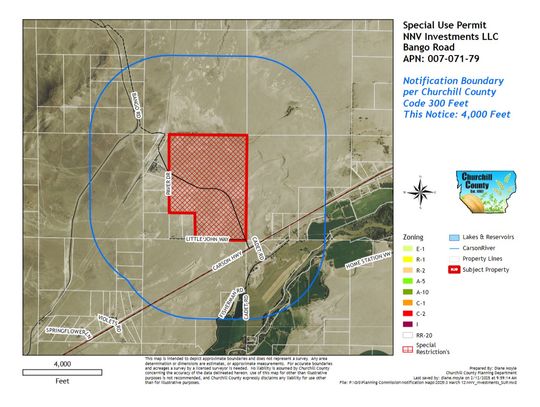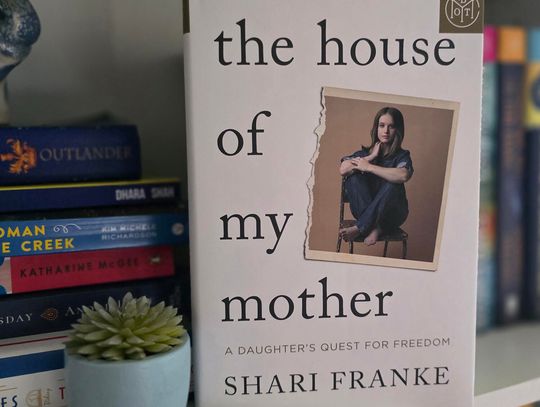According to local officials and anyone trying to rent or buy a house right now, the need for housing in Fallon has reached epic proportions. In response to that need, the Planning Department has developed a new ordinance that adds an lntensive Multi-Family Residential District (R-3) zoning designation into Title 16 of the Churchill County Code via Bill 2022-A. The ordinance was first reviewed during the Planning Commission's March 9 regular monthly meeting and was then the subject of a special meeting held on March 22 during which the ordinance was approved in a four-to-three vote.
Per the bill's summary, the new R-3 ordinance establishes development standards and approval requirements for all types of multi-family construction in all zoning districts, sets standards for density, required setbacks, amenities, height restrictions, and open space. Changes are made to the R-2 zoning district and its standards to coordinate with the new R-3 zoning district. Additionally, the two existing Intensity and Dimensional Standards tables are combined into one Site Development Standards table, correcting errors, clarifying their contents, and simplifying cluster development standards. A new R-3 column is also added to the Use Tables to identify allowable uses in that district, with other corrections being made throughout those tables.
During the review on March 9, Planning Department Senior Planner Dean Patterson explained, “The new R-3 district is defined, and the changes to R-2 are included. Distinctions are made between moderate-intensity and high-intensity zoning, emphasizing the use of sewer and water connections. The reason the R-3 zone is being proposed is for a project in the county for apartments, and it would need the R-3 zone for the project.” When one of the commissioners asked what project the ordinance was specifically for, Civil Deputy District Attorney Ben Shawcroft replied, “Let's be careful about referencing specific projects. That is not in front of the Planning Commission tonight, so let's just stick to the actual ordinance.”
Per Patterson, the apartment complexes in town now average 17 to 20 units per acre. In the new R-3 zone, the maximum density is defined as 16 units per acre and can increase to 24 units per acre with bonus densities, which may be granted in a Planned Unit Development (PUD) in exchange for providing additional beneficial facilities within or around that development such as wider roads, and tenant amenities such as trash collection areas and walking trails.
Commission member Zach Bunyard asked, “Have other counties adopted the R-1, R-2, R-3 zoning?” to which Patterson replied, “Yes, it's a very common strategy used mostly statewide and not unusual.” Bunyard then asked, “I know it applies only to areas that fall within the county wells and septic services, correct? And as things move forward, they can request changes in their zone as those services become available, correct?” Patterson again replied, “Yes, the ordinance does not set locations for an R-3 zone, it has to be requested.”
Commission member Deanna Diehl asked, “Do we know if the county services can support the higher density, now and for future projects?” Public Works Director Chris Spross replied, “For this particular project, yes it does. For future ones, for the project that wants to request a variance, it will be the responsibility of that developer to bring the water and sewer to their property.”
Commission member Scott Nelson asked that more time be given to the members to digest the extent of the new ordinance, and that it not be voted on at that time with Diehl concurring. The ordinance was then tabled for further review, and was the subject of the special meeting held on March 22.
Patterson introduced the new ordinance again in the meeting on March 22, then asked if the Commissioners wanted to review a summary or go through the ordinance in more detail. Bunyard and Nelson suggested that they not go through the entire ordinance again, and all other members agreed. Commission member with Commissioner Myles Getto asking about units per acre for the current apartments in town. Patterson said that the four-plexes on Keddie Street sit on quarter-acre lots averaging 16 units per acre, Arborwood averages 17 units per acre, Churchill Village has about 18 units per acre, and Morning Glory has about 20 units per acre. All four complexes are in town and served by City of Fallon water and sewer services. “The new R-3 zone for the County is less than most of those.”
Bonus densities were described by Patterson as being used in a PUD when additional beneficial facilities are provided by the developer. “The Sky Ranch project had bonus densities for that one. They agreed yo participate in some off-site road improvements, some widening of the Wade Lane thoroughfare through the property, and widening of Moody Lane frontage. These were all bonus density items. Plus they provided a large chunk to provide a community services site for a substation or branch.”
Bonus densities can increase the units per ace in an R-1 zone from 5 to 8 units, in an R-2 zone from 10 to 16 units, and in an R-3 zone from 16 to 24 units. But Patterson said, “These are not automatic. The developer has to meet the community value criteria to earn them.”
Bunyard asked about the requirements to have water and septic services available in an R-3 zone, and Patterson replied, “Yes, to do an R-3, you have to connect to the County's sewer and water services.”
Diehl asked where the term Bonus Density was defined. She was told by Patterson that it was defined elsewhere in the main PUD section of the County Code, and that section was not included in the new ordinance package because it wasn't changing. She then asked, “What is the criteria for a bonus density?” Patterson's response was, “It's not super specific. It provides examples rather than saying exactly what it is. It can include things like purchasing Transfer Development Rights and bringing those to the property. It really leaves it up to the Planning Commission and the County Commission to decide what may be appropriate for bonuses being requested.”
Chairman Charlie Arciniega then asked, “Amenities in a complex such as a pool, or community room, health club, anything like that the residents of the village can use, but also that county residents can use. Is that defined in the ordinance?” and Patterson replied, “Probably. There are examples, but it has to provide a community benefit. The items you asked about would be more for the residents of the village, and not available to the rest of the community. An exception to that might be a community park that the Parks Department would become responsible for.”
Spross clarified why the ordinance is potentially as vague as it is. “It's really dependent on the geographic location of the development. For example, if you're going to build a development like this, and across the street there's a community park, then suggesting to build a community park within the development doesn't make sense. But if that development is miles away from the park and wants to include one, then the Planning and County commissions may recognize that new park as a benefit to the community. That's why there's a bit of flexibility for the commissions to decide what they may consider to be a community benefit.”
Commission member Paul Picotte asked, “The project that is going forward, can we talk about that?” Attorney Shawcroft responded, “The purpose of this ordinance coming forward at this time is because, number one, the County has never been approached with a project that would want to build a multi-family complex. Now we are faced with such a severe housing crisis especially when it comes to multi-family housing that the County has been more receptive to addressing that, and finding locations that might be suitable, and talking with developers who may be interested in pursuing a project.”
Shawcroft continued, “The County is now in a position to prepare to move forward with an actual development, and it's not the one on Birch Lane, it's a different one entirely. Step one is to build the framework so that the project could be conceptualized and developed. We don't want to get into how many units, or other density discussions because that project is not on the agenda. But yes, the reason for the ordinance is because the County is pursuing multi-family housing. This just implements the County Code for it. When a development is looking to move forward they will have to ensure the parcel is zoned appropriately. If not, since R-3 is new, we can say for sure that there aren't any parcels currently zoned R-3. So, the parcel would have to be reviewed before it can be rezoned.”
Arciniega then read a letter into the record from Lori Souba who lives on Silver Circle and felt that the R-3 zoning would destroy the ruralness of the County. She asked that R-3 zoning not be implemented in the county, to leave multi-family housing for the City. Resident Dennis Allen also spoke against the new high-density zoning, saying it would be a shame to start bringing multi-family housing into the County.
Members Charlie Arciniega, Myles Getto, Zack Bunyard, and Shane Yates voted in favor of the ordinance. Voting against it were members Paul Picotte, Deanna Diehl, and Scott Nelson. The meeting started at 6:30 p.m., and with the ordinance approved, the meeting adjourned at 7:04 p.m. The new R-3 ordinance will now go to the County Commissioners for approval and adoption into the County Code.








Comment
Comments